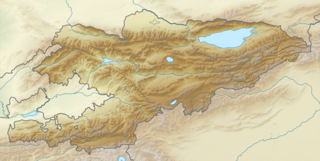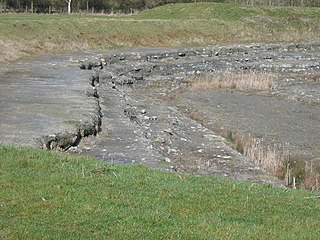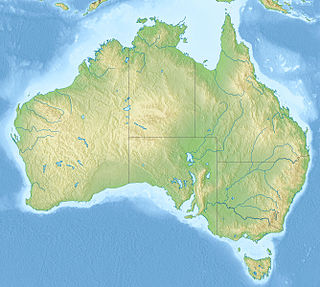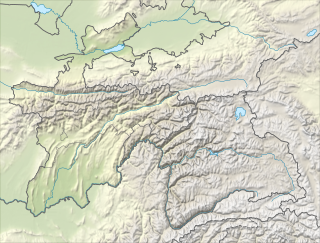 W
WThe Balabansai Formation is a geological formation in Kazakhstan, Kyrgyzstan and Uzbekistan whose strata date back to the Bathonian and Callovian stages of the Middle Jurassic. Dinosaur remains are among the fossils that have been recovered from the formation. The lithology primarily consists of variegated sandstones, siltstones, claystones, and rare gravels and marls. Many taxa have been found in the formation, including amphibians and mammals
 W
WThe Chari Formation is a Jurassic geologic formation in Gujarat, western India. Dinosaur remains are among the fossils that have been recovered from the formation, although none have yet been referred to a specific genus.
 W
WThe Cornbrash Formation is a Middle Jurassic geological formation in England. It ranges in age from Bathonian to Callovian, the uppermost part of the Middle Jurassic. Dinosaur remains are among the fossils that have been recovered from the formation, although none have yet been referred to a specific genus. The name Cornbrash is an old English agricultural name applied in Wiltshire to a variety of loose rubble or brash which, in that part of the country, forms a good soil for growing corn. The name was adopted by William Smith for a thin band of shelly limestone which, in the south of England, breaks up in the manner indicated. Although only a thin group of rocks, it is remarkably persistent; it may be traced from Weymouth to the Yorkshire coast, but in north Lincolnshire it is very thin, and probably dies out in the neighborhood of the Humber. It appears again, however, as a thin bed in Gristhorpe Bay, Cayton Bay, Wheatcroft, Newton Dale and Langdale. In the inland exposures in Yorkshire it is difficult to follow on account of its thinness, and the fact that it passes up into dark shales in many places the so-called clays of the Cornbrash, with Avicula echinata. The Cornbrash is of little value for building or road-making, although it is used locally; in the south of England it is not oolitic, but in Yorkshire it is a rubbly, marly, frequently ironshot oolitic limestone. In Bedfordshire it has been termed the Bedford limestone.
 W
WThe El Mers Group is a geological group in the Middle Atlas of Morocco. It is subdivided into 3 formations named the El Mers 1, 2 and 3 Formations respectively. It is a marine deposit primarily consisting of marl, with gypsum present in the upper part of unit 3. and is the lateral equivalent of the terrestrial Guettioua Sandstone. Dinosaur remains are among the fossils that have been recovered from the group most notably those of "Cetiosaurus" mogrebiensis and Adratiklit.
 W
WThe Fernie Formation is a stratigraphic unit of Jurassic age. It is present in the western part of the Western Canada Sedimentary Basin in western Alberta and northeastern British Columbia. It takes its name from the town of Fernie, British Columbia, and was first defined by W.W. Leach in 1914.
 W
WThe Haifanggou Formation is a fossil-bearing rock deposit located near Daohugou village of Ningcheng County, in Inner Mongolia, northeastern China.
 W
WThe Kalur Chert is a geologic formation in Albania. It preserves fossils dating back to the late Bajocian to mid Oxfordian of the Jurassic.
 W
WThe Kiyosu-e Formation is a Middle Jurassic (Callovian) to Early Cretaceous (Berriasian) geologic formation of the Toyonishi Group in Yamaguchi Prefecture, Japan. Fossil ornithopod tracks have been reported from the formation.
 W
WThe late Middle Jurassic lagerstätte at La Voulte-sur-Rhône, in the Ardèche region of southwestern France, offers paleontologists an outstanding view of an undisturbed paleoecosystem that was preserved in fine detail as organisms died at the site and settled to the bottom of a shallow epicontinental sea, with a folded floor that in places exceeded 200 m at this site. The site preserves a marine system of the Lower Callovian stage, a little over 160 mya. The sequence is exposed in a series of quarries at La Boissine, west of the village of La Voulte-sur-Rhône. Iron pyrites in the silty shale are symptoms of an anoxic environment. The site was recognized among French paleontologists from the mid-nineteenth century for its finely detailed fossils.
 W
WThe Los Molles Formation is a geologic formation of Early to Middle Jurassic age, located at northern and central part of Neuquén Basin at Mendoza Shelf in Argentina. It is overlain by the Niyeu–Lajas Formation.
 W
WThe Lotena Formation is a geologic formation dated from the Late Callovian to Early Oxfordian in the Neuquén Basin in Mendoza Province, Argentina. The formation, first defined by Weaver in 1931 and named after Cerro Lotena, consists of fluvial conglomerates, calcareous sandstones and marine limestones and shales. The Lotena Formation is overlain by the La Manga Formation and overlies the Lajas Formation of the Cuyo Group. Initially, the fossil find of the pterosaur Herbstosaurus pigmaeus was reported from the formation, but this fossil was found in the younger Vaca Muerta. The formation is a reservoir rock in the Neuquén Basin.
 W
WThe Marnes de Dives is a geological formation in Normandy, France. It dates back to the upper part of the Callovian stage of the Middle Jurassic. And is partially equivalent to the Oxford Clay in England. It predominantly consists of ooidal marl, rich in pyrite and lignite, interbedded with thin limestone horizons. It is best exposed at the base of the Falaises des Vaches Noires as well as the foreshore at low tide. It is known for its fossils, notablity those of ammonites, marine crocodiles and fragmentary remains of dinosaurs, mostly theropods.
 W
WThe Matmor Formation is a geologic formation of up to 100 metres (330 ft) thick, that is exposed in Hamakhtesh Hagadol in southern Israel. The Matmor Formation contains fossils from a Jurassic equatorial shallow marine environment. Bivalves, gastropods, sponges, corals, echinoderms, and sclerobionts are present in the Matmor Formation to various degrees. The stratigraphy of the Matmor Formation consists of alternating layers of limestone and marl.
 W
WThe Osgodby Formation is a geologic formation in England. It comprises rocks and fossils dating from the Callovian age of the Jurassic period.
 W
WThe Oxford Clay is a Jurassic marine sedimentary rock formation underlying much of southeast England, from as far west as Dorset and as far north as Yorkshire. The Oxford Clay Formation dates to the Jurassic, specifically, the Callovian and Oxfordian ages, and comprises two main facies. The lower facies comprises the Peterborough Member, a fossiliferous organic-rich mudstone. This facies and its rocks are commonly known as lower Oxford Clay. The upper facies comprises the middle Oxford Clay, the Stewartby Member, and the upper Oxford Clay, the Weymouth Member. The upper facies is a fossil poor assemblage of calcareous mudstones.
 W
WPuchezh-Katunki is a meteor crater located in the Nizhny Novgorod Oblast of the Volga Federal District, Russia. It is 80 km (50 mi) in diameter and is estimated to be 167 ± 3 million years old, placing it in the Middle Jurassic. The crater is not exposed to the surface, but appears as variation in the vegetation. The Earth Impact Database lists a rim-to-rim diameter of 40 kilometres (25 mi).
 W
WThe Purlawaugh Formation is a Toarcian to Oxfordian geologic formation of New South Wales, Australia. The formation has provided many fossil fish and flora.
 W
WThe Shishugou Formation is a geological formation in Xinjiang, China.
 W
WThe Todilto Formation is a geologic formation in northern New Mexico and southeastern Colorado. It preserves fossils dating back to the Callovian stage of the middle Jurassic period.
 W
WThe Ukureyskaya Formation, also referred to as the Ukurey Formation is a geological formation made up of Middle Jurassic and Late Jurassic layers. It covers large areas around Kulinda. The formation is where the type specimen fossils of Kulindadromeus zabaikalicus were found, alongside a single tooth from a medium-sized theropod of unknown affiliations and other indeterminate ornithschians. Recent dating work suggest that the layers containing Kulindadromeus are Bathonian in age.
 W
WThe Zarbuz Formation, also named Zarbiz Svita, is a Jurassic geologic formation in Tajikistan. Fossil ornithopod tracks have been reported from the formation.